Hang Power Snatch Exercise: How To, Benefits & Variations
Author:
Unlock your full potential by engaging with our experts and community! Have questions about your fitness journey or looking for expert advice on weightlifting techniques? Don’t hesitate — leave a comment below and Oleksiy Torokhtiy will provide a personalized answer and insights to help you reach your goals.
Torokhtiy is reader-supported. Some links are affiliate links, and we may earn a commission at no extra cost to you. See our disclosure page for details.
Are you looking to boost your strength and power? If you are, then hang power snatch is your new gym bestie. It’s an explosive lift that has a bunch of benefits, and if we’re being completely honest – it looks super cool. So cool, in fact, that one of the benefits is that you’ll be able to show off to all the other people at the gym!
Kidding aside, it really is an impressive exercise and when you master it, you’ll feel extremely proud of yourself. We’ll start with the basics, explain how to do it, what to expect from it and we’ll throw in some tips and alternatives just to keep things interesting.
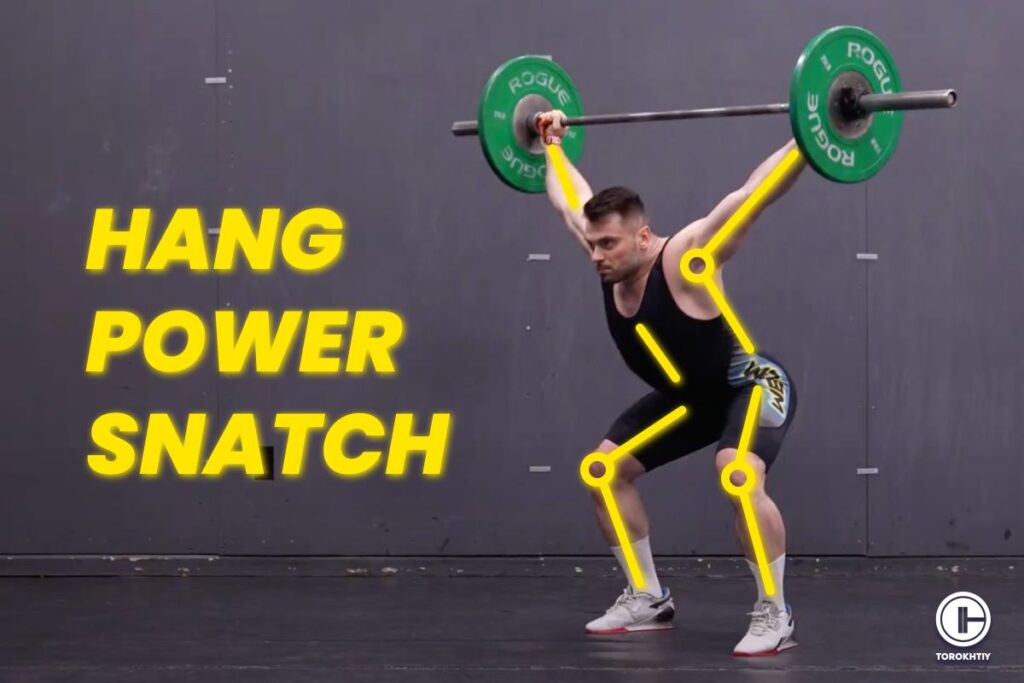
What Is the Hang Power Snatch?
So, what exactly is the hang power snatch? Well, it’s kind of like a lightning bolt of power training. It’s a really dynamic movement where you lift the barbell from just below/above your knees all the way up overhead in one explosive, smooth motion.
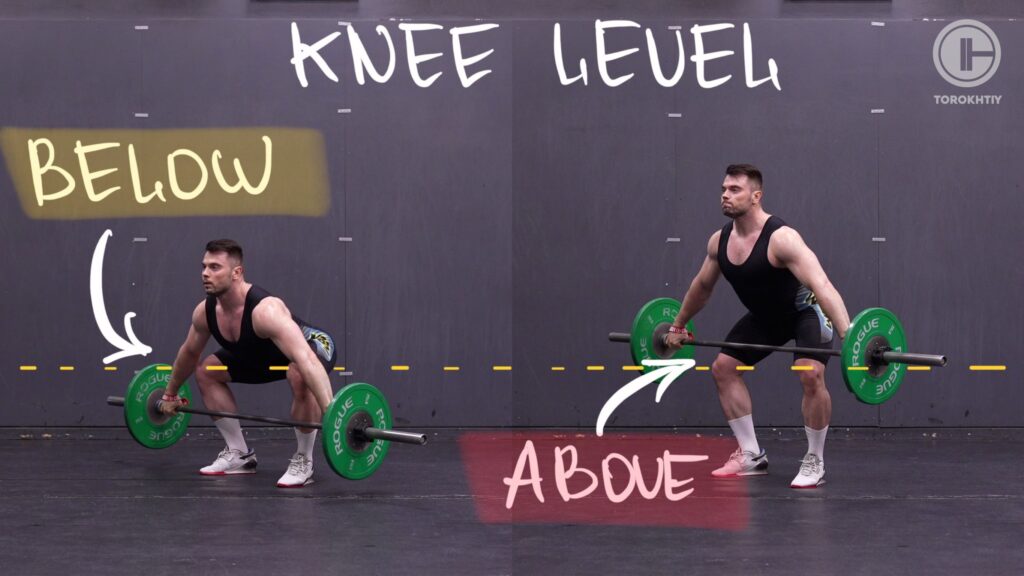
This exercise targets your shoulders, back, legs, and core, meaning you get a full-body workout and you look cool doing it! If you practice on a regular basis and you mind your form, the hang power snatch will make you stronger, improve coordination and explosiveness, and give you an edge in whatever sport you’re training.
How to Do the Hang Power Snatch?
Grab your barbell and let’s see how to do this step-by-step.
1. Stance
Stand with your feet hip-width apart and with toes pointing out a little. The barbell should be at your mid-thigh level. Your knees can be slightly bent and your chest needs to be up with the shoulders back.
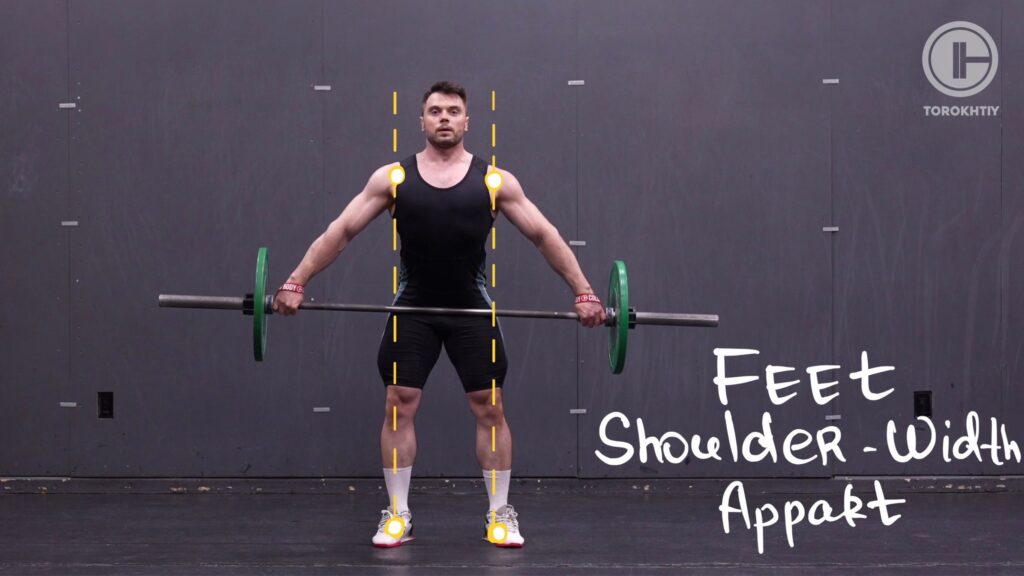
2. Starting Position
Push your hips back to lower the barbell to the hang position, which can be below or just above the knees, depending on variation. Keep your core tight and back straight.
Pull your shoulder blades down and back to engage the lats. The arms are relaxed, elbows outside, but the grip on the bar is firm.
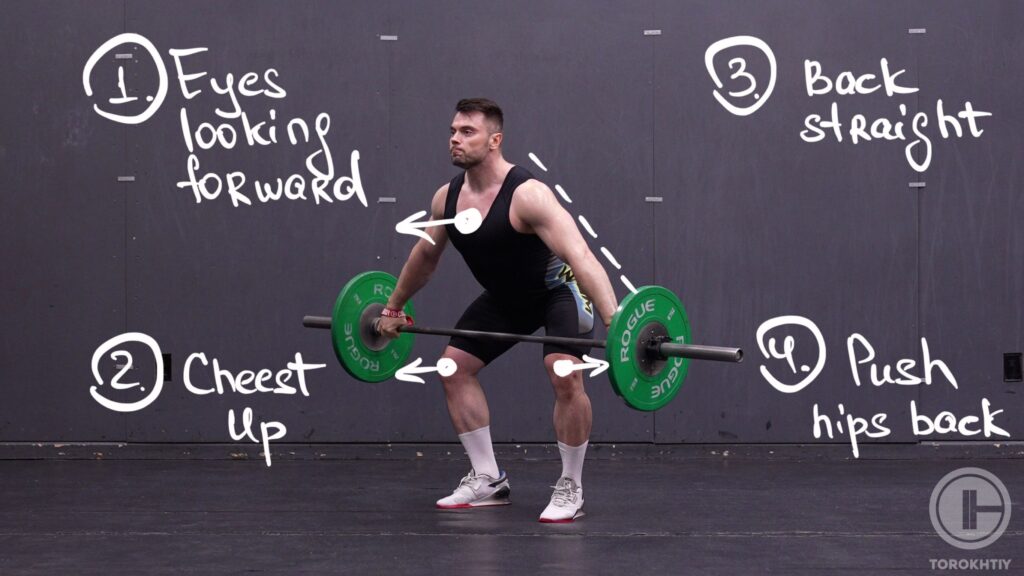
3. First Pull
This one is debatable as the first pull usually refers to the 1st part of the movement when athletes pull the bar from the ground to just above the knees where the 2nd pull starts. The controversy lies in the concept that in the hang position there is no 1st pull in theory because athletes don’t pull from the ground. However in the low hang version the bar is still below the knees…
We will write about that motion as the part of the 2nd pull and stick with the idea that there is no really 1st pull as you don’t lift the bar from the ground.
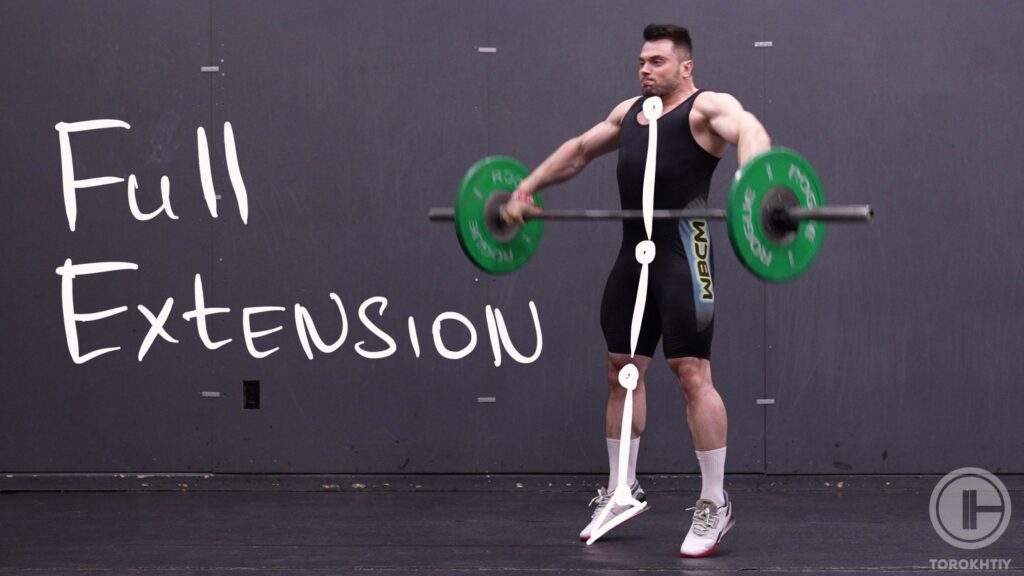
4. Second Pull and Power Position
When the bar passes your knees, completely extend your hips, knees and ankles and when you reach power position shrug your shoulders explosively and at the same time.
Continue to pull up with your arms and bring your elbows high and out. If you did everything right, your body is now fully extended.
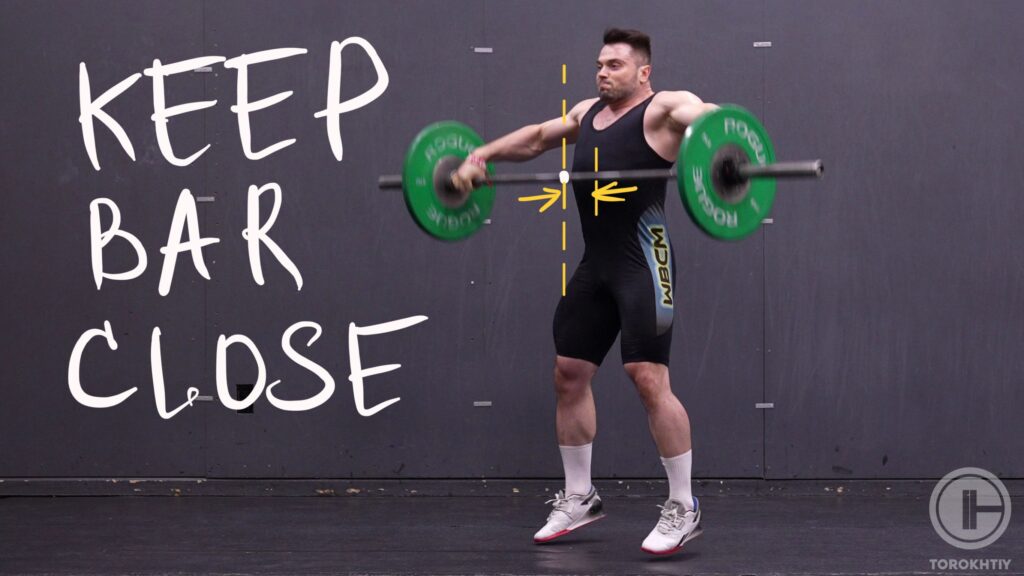
5. Turnover and Catch
After the pull reaches its peak, quickly pull yourself under the bar. This requires a drop in a partial squat. Rotate your wrists as you move under the bar so that your palms are facing up and the barbell is caught overhead.
You should catch the barbell in a partial squat with your hips back and knees bent. The arms are fully extended and the barbell is either directly above or slightly behind your head.
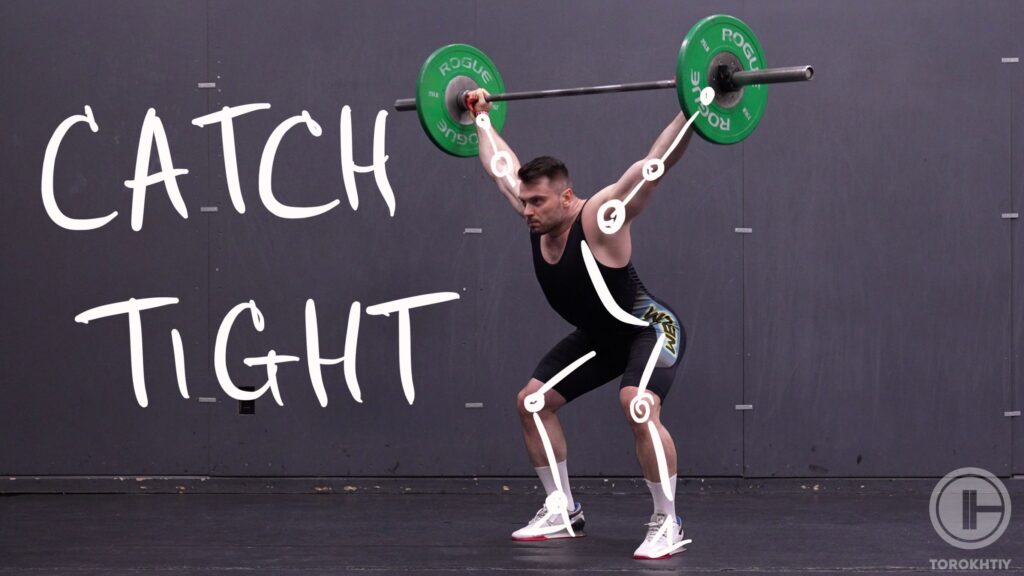
6. Recovery
Extend your hips and knees until you’re upright but make sure the barbell stays overhead.
7. Lower the Bar
Now you need to lower the bar back. Gently bring the bar to the hang position at your mid-thigh before you set it down. You can also drop it if you’re using bumper plates and you’re lifting in an appropriate area.
Save it for easy access!
Bookmark this page now to access the program and instructional videos anytime, anywhere.
Stop wasting time searching during your gym sessions.
Hang Power Snatch Program
It doesn’t sound that complicated, right? Let’s see how to include it into your routine.
Beginner
- Sets: 3-4 sets
- Reps: 3-5 reps per set
- Frequency: 2-3 times per week
- Progression: Mastering the form is your priority, so start with just the bar or really light weights. Increase the weight bit by bit as you get stronger and as your technique improves.
Intermediate
- Sets: 4-5 sets
- Reps: 3-5 reps per set
- Frequency: 3-4 times per week
- Progression: Increase the weight so that it’s challenging but still allows you to maintain good form. Include variations of the hang power snatch, like the high hang power snatch or low hang power snatch. Reduce rest times between sets or do supersets.
Advanced
- Sets: 3-5 sets
- Reps: 2-4 reps per set
- Frequency: 2 times a week
- Progression: Depending on your goals, focus on weight, intensity, technique… It should be based on your limiting factors. Include the hang power snatch in Olympic weightlifting complexes to improve performance and refine technique.
Follow us!

Free!
Get a 2-week Weightlifting Program as a bonus for the subscription to kickstart your training plan!

Free!
4 Common Hang Power Snatch Mistakes
You’ll make mistakes and that’s normal, but it’s good to be aware of them and know how to prevent them.
❌ Starting with the Bar Too Far From the Body
If the barbell is too far at the start, it will lead to off mechanics and less power output and possible injuries. Keep it close to your body the entire time to maximize leverage and explosiveness.
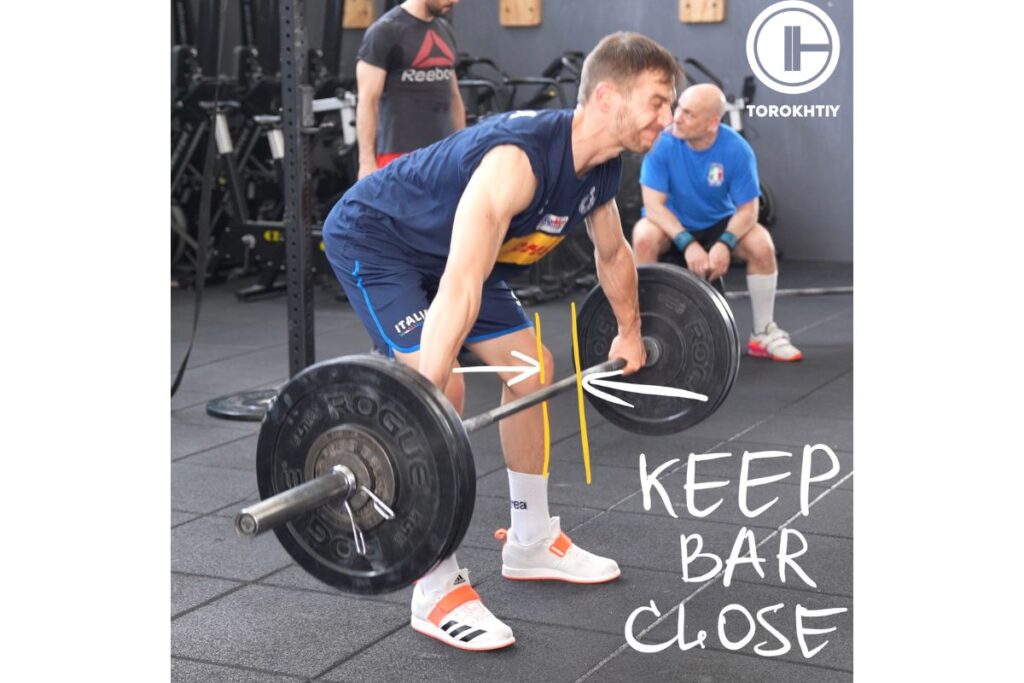
❌ Not Extending the Hips All the Way
You want to fully extend your hips during the lift or you’ll be robbed of the power and height on the barbell. Drive your hips forward forcefully to get the most upward momentum and power.
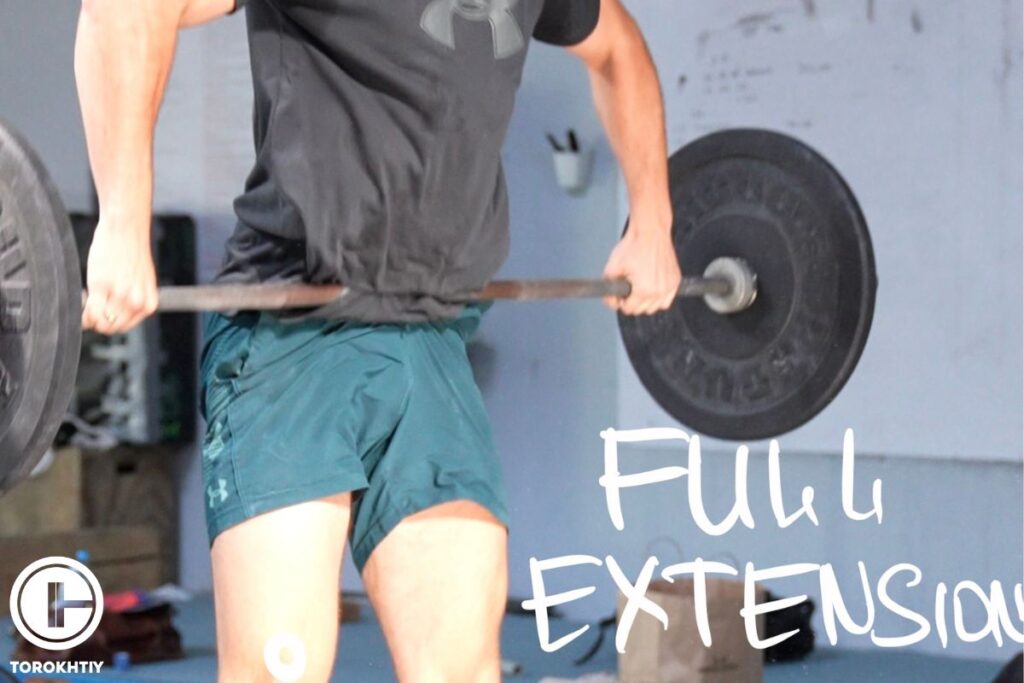
❌ Pulling with the Arms Too Early
When you use your arms to pull the barbell too early in the movement, you mess up the natural flow and power of the lift. Drive through your hips and legs before you engage the arms to pull the bar up.
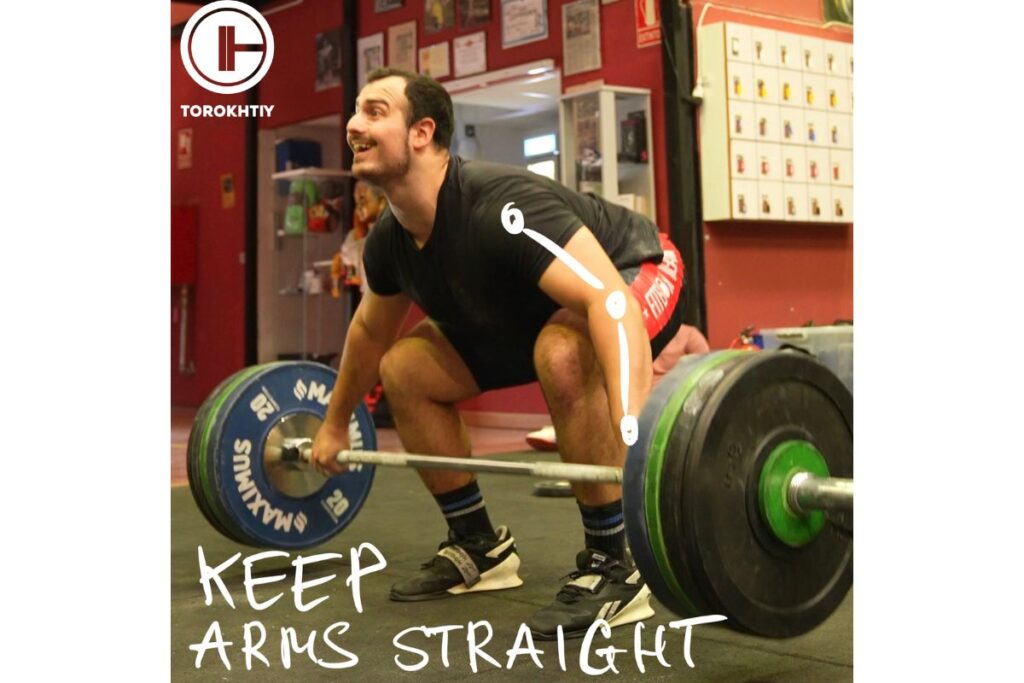
❌ Feet Too Wide
If you land with your feet rotated too much out , it will affect your balance and stability. If your feet are angled too much, it will be challenging to maintain proper form and effectively absorb the weight.
Make sure your feet are placed only with a slight outward angle so you can balance the catch and maintain control over the lift.
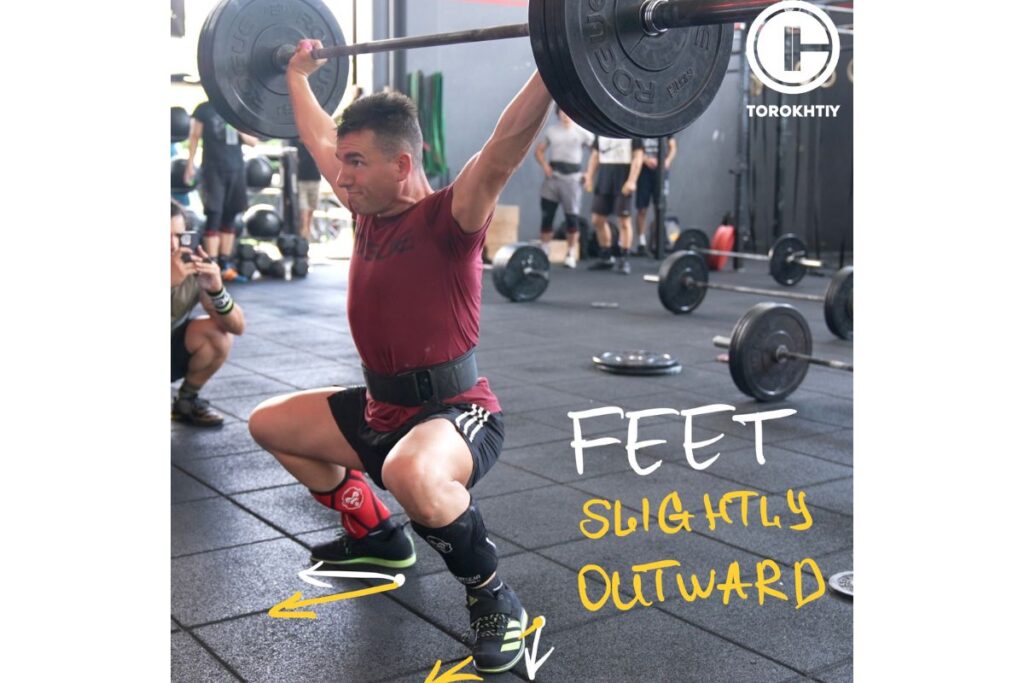
4 Benefits of Hang Power Snatch
It’s about the weights, but it’s also about the benefits! The hang power snatch is a powerhouse that brings about a ton of benefits. Let’s get into some of the hang power snatch benefits:
Tips From the Champ
When selecting a weight for the hang power snatch, choose a load that allows you to maintain proper form and execute each repetition explosively. Aim for 60-70% of your one-rep max snatch to ensure you can focus on technique and speed without compromising safety.
Olympic Weightlifting Champion
✅ Total-Body Strength
When done correctly and with enough weight it can challenge your strength – check SAID principle, and since it engages many muscle groups at the same time, the result is increased strength in your entire body. Talk about time efficiency!
✅ Explosive Power
If you could describe the hang power snatch in a word, it would be – explosive. You need rapid force production to do it, so it’s an excellent exercise to increase your explosive power.
✅ Increased Bone Density
Weight-bearing exercises increase bone density and stimulate growth, and the hang power snatch is one of these exercises. It reduces the risk of osteoporosis and bone fractures and supports bone health.
✅ Better Athletic Performance
You could be a competitive athlete or a weekend warrior – whatever the case, the hang power snatch will take your athletic performance to the next level. It’s dynamic and mimics the conditions of many different sports.
3 Hang Power Snatch Variations
If you get bored of the hang power snatch, some variations will come in handy!
1. High Hang Power Snatch
You’ll start by holding the bar at mid thigh level with little bend at the knees. This variation focuses on explosiveness and speed because you’re starting from a higher point and relying more on the power that comes from your hips and legs to propel the bar up.
2. Low Hang Power Snatch
For this one, you’ll start by holding the bar below the knees but off the ground. This variation focuses more on the first and second pull and it helps you get the timing and positioning right.
3. Hang Power Snatch with Pauses
You do it just like you would the regular hang power snatch, but you do small pauses at various points of the lift. This will improve your positional awareness, stability, and engage your muscles more.
3 Hang Power Snatch Alternatives
For even more variety, you can do some alternatives that will give you pretty much the same results and benefits.
1. Power Snatch
Like the hang power snatch, the power snatch will engage multiple muscle groups at once and improve speed, power, and coordination.
It’s a dynamic exercise here you explosively pull the barbell from the floor to shoulder height in one motion.
2. Kettlebell Snatch
This is a very simple but very effective exercise that targets mostly the posterior chain. You just swing a kettlebell between your legs and then drive it forward explosively. This one is particularly good for beginners!
3. Dumbbell Snatch
This is a unilateral alternative and it’s great to address muscle imbalances that can cause injuries. It’s kind of like the hang power snatch but your arms move independently, so it improves coordination.
Who Should Do the Hang Power Snatch?
It’s hard to think of someone that can’t get anything out of it because it’s versatile and packed with benefits. But let’s see who it’s particularly good for!
1. Weightlifters
First ones that come to mind – weightlifters! Whether competitive or recreational, the hang snatch will improve weightlifters’ technique, explosive power, and just strength in general.
2. Athletes
Athletes from many different sports (football, soccer, basketball, track and field, etc.) can benefit from this exercise because it improves speed, agility, and power output.
3. Fitness Beginners
It seems intimidating, but it’s really not that big of a deal. If you work with a coach, you’ll see it’s simpler than it looks, and it will do wonders for your fundamental strength, coordination, and body awareness.
Muscles Worked by the Hang Power Snatch
It’s a full-body exercise, so in terms of muscles, let’s just say a lot of them wake up for the hang power snatch.
When you explode up, you fire up your legs, especially your quads, glutes, and calves. But that’s not all! When you pull the bar up, it engages your back muscles, and as you catch it, your shoulders and arms work to stabilize it. Even your core gets in on the action to keep you stable and balanced.
Conclusion
This isn’t just an exercise – it’s a powerful movement that includes your entire body. Whatever your situation may be (athlete, beginner, pro lifter, etc.), if you want a challenge, give the hang power snatch a try.
Be reasonable, don’t exhaust yourself too much and include rest days into your training because they’re important for your muscles to recover and grow.
Will you give it a go or are you too intimidated? If you think it’s scary, what about it worries you the most? If you’re tried it out, how did you like it? Any tips you feel like sharing?
Leave a comment and happy lifting!
References:
- Becks Shepherd “Why are rest days important?” LiveScience, https://www.livescience.com/why-are-rest-days-important (accessed June 12th, 2024)
- “Prevention Osteoporosis,” National Health Service, https://www.nhs.uk/conditions/osteoporosis/prevention/ (accessed June 12th,2024)
- Sarah Vallie “How to Do a Snatch,” WebMD, https://www.webmd.com/fitness-exercise/how-to-do-a-snatch (accessed June 12th, 2024)
- “Slowing bone loss with weight-bearing exercise,” Harvard Health Publishing, https://www.health.harvard.edu/staying-healthy/slowing-bone-loss-with-weight-bearing-exercise (accessed June 12th, 2024)
- Venkat S. R. “What Are Muscle Imbalances?” WebMD, https://www.webmd.com/fitness-exercise/what-are-muscle-imbalances (accessed June 12th, 2024)
- Photos by Torokhtiy Media Team.
Why Trust Us?
With over 20 years in Olympic weightlifting, strength training, nutrition coaching, and general fitness our team does its best to provide the audience with ultimate support and meet the needs and requirements of advanced athletes and professional lifters, as well as people who strive to open new opportunities and develop their physical capabilities with us.
By trusting the recommendations of our certified experts in coaching, nutrition, and sports training programming, as well as scientific consultants, and physiotherapists, we provide you with thorough, well-considered, and scientifically proven content. All the information given in the articles concerning workout programming, separate exercises, and athletic performance, in general, is based on verified data.
The product testing process is described in more detail here.
Author: Oleksiy Torokhtiy
Olympic Weightlifting Champion
Best Results: Snatch – 200 kg,
C&J – 240 kg
Oleksiy Torokhtiy is a professional athlete boasting 20 years of experience in Olympic weightlifting. With multiple European and World titles under his belt, he has showcased his prowess in two Olympic Games (Beijing 2008 and London 2012). Upon concluding his illustrious career, Oleksiy dedicated himself to coaching. By 2022, he had conducted over 200 weightlifting seminars worldwide. He is the visionary behind an international sportswear and accessories brand known for its motto, “Warm Body Cold Mind.” Additionally, he is an esteemed author and the creator of a series of training programs and eBooks.




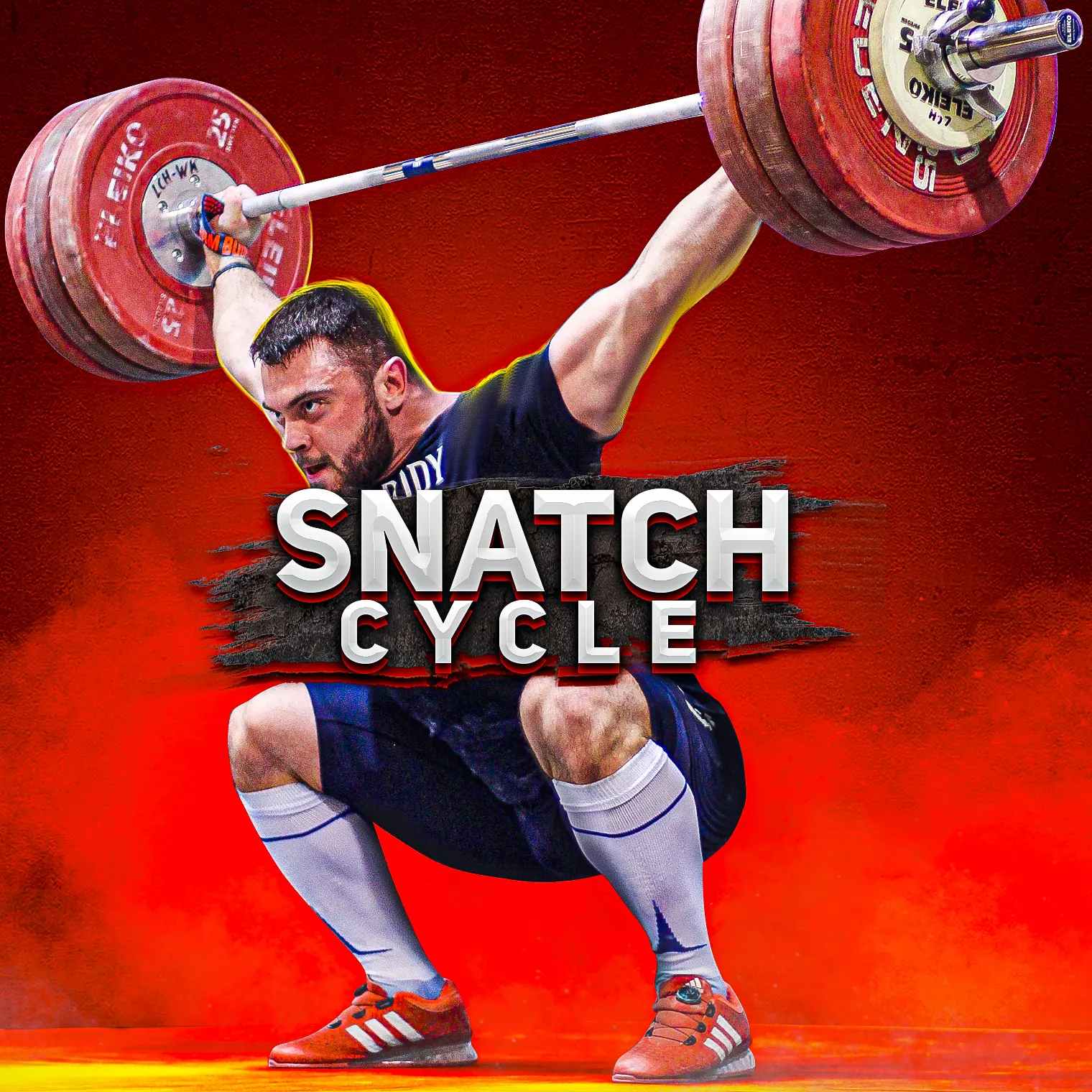
Still have questions after reading our article? Unlock your full potential by engaging with our experts and community! Don’t hesitate — leave a comment below and Oleksiy Torokhtiy will provide a personalized answer and insights to help you reach your goals.